About the Conference
by Jillian Vandervoort
Wilde ‘82: A Lesbian and Gay History Conference took place as part of Doing It!, Toronto’s ten-day lesbian and gay liberation festival in June and July of 1982.
Doing It! was organized by Philip Fotheringham and Michael Lynch, along with the Toronto Gay Community Council, and took place from June 26th – July 4th, 1982 (McCaskell 398-399). The festival was attended by over 2,700 people, and included a variety of diverse events such as film screenings, dances, theatre performances, a picnic, and more (Chambers 66).
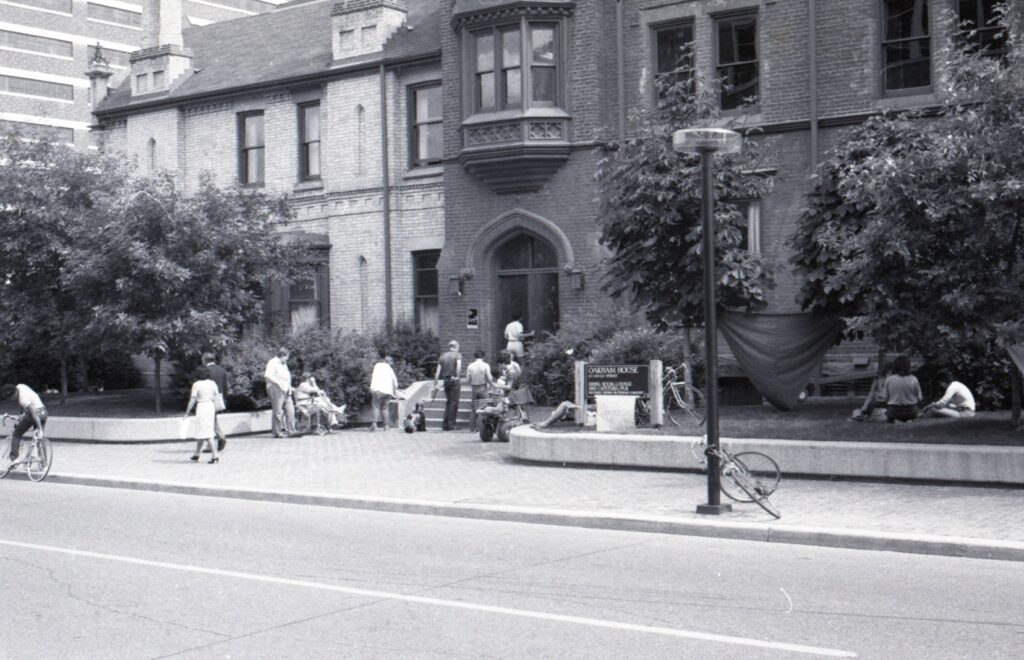
Wilde ‘82 took place at the Ryerson Polytechnic Institute, now Toronto Metropolitan University, and featured twenty-three historians (the majority of whom were from the United States) who presented their work on lesbian and gay history. The conference also included a panel discussion and a dramatic reading of Richard Howard’s poem “Wildflowers,” which imagined an encounter between Walt Whitman and Oscar Wilde.
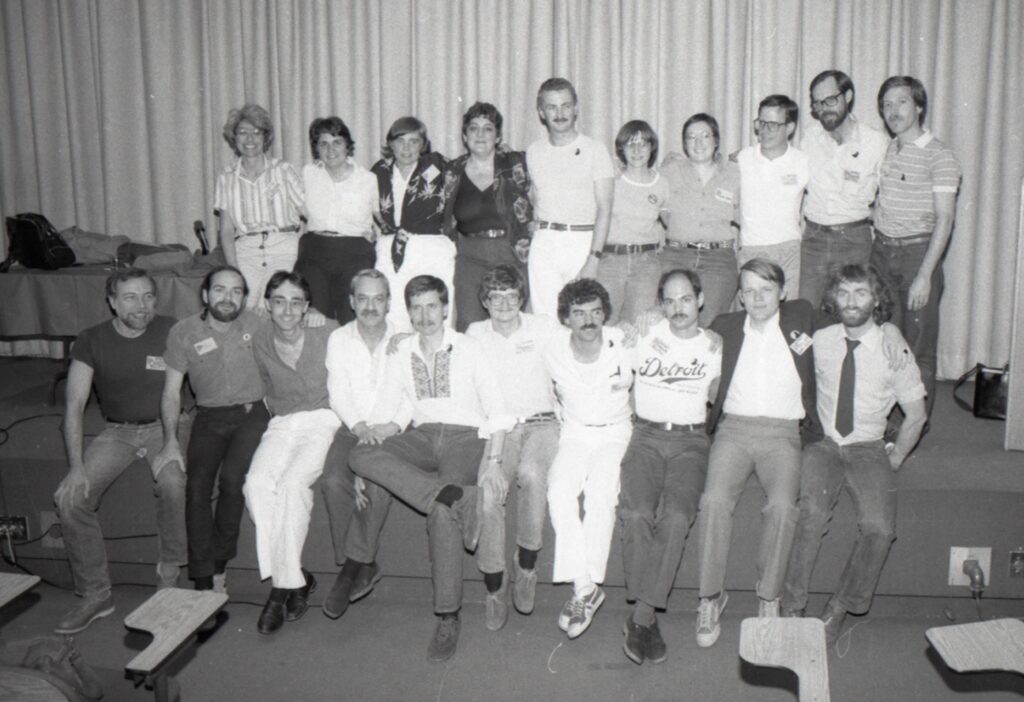
Wilde ‘82 was organized by the Canadian Gay Archives (CGA) and spearheaded by CGA members Alan V. Miller and James Fraser. The CGA, now called The ArQuives: Canada’s LGBTQ2+ Archives, was founded in 1973 and is now the world’s largest independent LGBTQ2+ archive (Jennex and Eswaran 22).
The conference was titled Wilde ‘82 to commemorate the 100-year anniversary of Oscar Wilde’s North American lecture tour. Participants were given yellow buttons depicting Oscar Wilde; in the pin button image, Wilde wears a pink triangle on his lapel in place of his infamous carnation. For more on Oscar Wilde’s 1882 tour of North America, and his status as a queer figure, click here.

Individual paper presentations dealt with a variety of topics related to lesbian and gay life, including a history of lesbian and gay military members in the Second World War, the prevalence of homosexuality in Ancient Rome, and lesbian communities and cultures in the United States, among other topics.
The featured panel of the conference was called “The Making of the Modern Homosexual: the Social Construction of Lesbians and Gay Men.” Moderated by Greg Sprague, the panel featured new research by Bert Hansen, Karla Jay, Joe Interrante, and Gayle Rubin. The historians on the panel challenged the historical concept of homosexuality as a biological phenomenon by exploring the difference between homosexual behaviour and homosexual identity (Jackson).
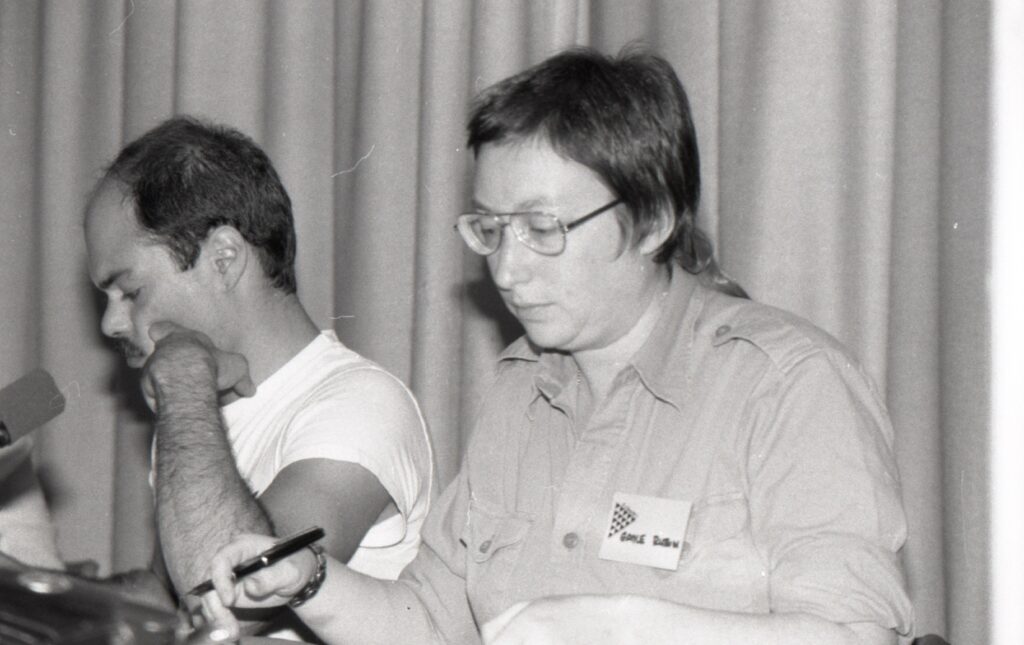
How was this event significant?
According to Stephanie Chambers, Wilde ‘82 was significant because it was one of the first international lesbian and gay history conferences in North America. Previous to this, the CGA co-hosted a conference with Michael Lynch, Professor of English at the University of Toronto, entitled “Whitman in Ontario” in October, 1980. However, this earlier conference was a smaller affair and was focused on a single historical person at a specific moment of time. Wilde ‘82 was a widely advertised event that brought together academics and activists from Canada, the United States, and further afield working on a diverse range of subjects. The Body Politic’s summary of the conference described it as a “consolidation of a new ‘school’ of gay history” (Jackson 34). In this way, the conference established a foundation of knowledge on which the scholarship of queer studies in academia is built.
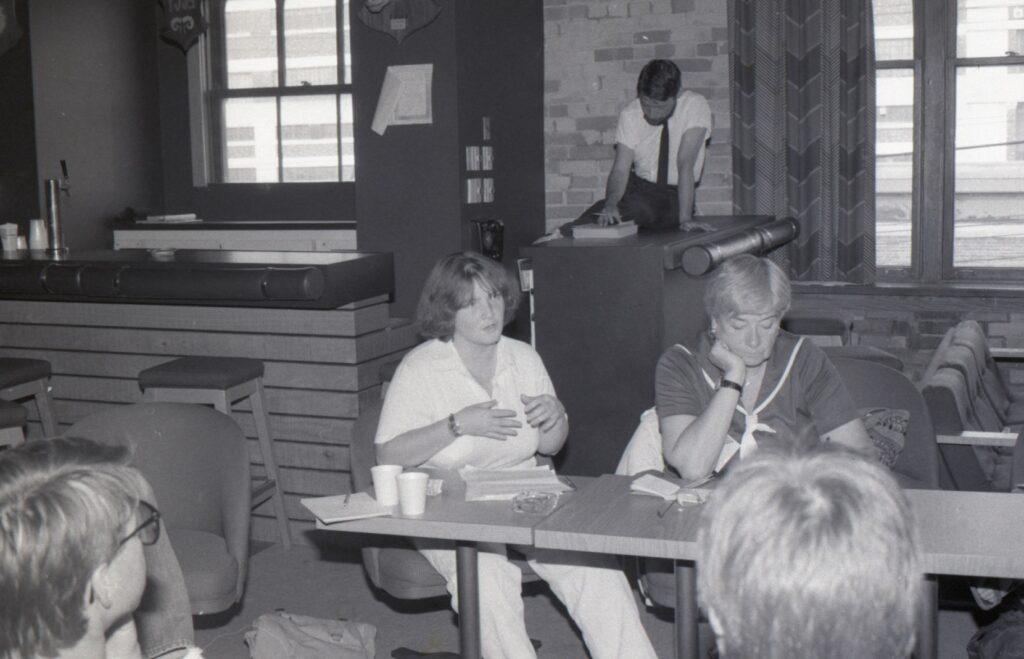
The event was also significant for its formation of a collective consciousness during a period of time where the queer community was under attack from the police. The conference took place a year after the Toronto bathhouse raids of 1981, in which Toronto Police Service officers violently raided four gay bathhouses that were located in downtown Toronto (Jennex). The police arrested three hundred gay men with the use of excessive force during what they called “Operation Soap.” They subjected the men to slurs, taunts, and the threat of outing their sexuality to family members. For more on lesbian and gay liberation in the 1970s and 1980s, click here. For more on Operation Soap, click here.
Both Doing It! and Wilde ‘82 tapped into the burgeoning collective organizing taking shape in Toronto in the 1980s. Tim McCaskell argues that Doing It! was significant in demonstrating the sheer energy and number of individuals willing to stand up for themselves after being provoked by the bathhouse raids (399). Organizing a festival celebrating the queer community allowed participants to see and understand the size of the queer movement while sending a political statement of refusal to be beaten down by an oppressive state. Wilde ‘82 was an important component of this larger festival.
A Brief History of Ryerson Polytechnic Institute
The Ryerson Institute of Technology was founded in 1948 to meet the changing demands of the workforce after the Second World War by providing career-focused education to produce more skilled tradespeople (Doucet). The Institute was first located at Gould and Church Street. Its early years were mainly focused on teaching practical skills that could be used in times of war, such as training air force pilots and armed services. Overtime, the institution adapted its curriculum to focus more on management skills and humanities.
In 1963, the institution became formally named Ryerson Polytechnical Institute and gained a board of directors (Doucet). In 1971, Ryerson gained the ability to grant degrees, which set in motion the growth of campus through the construction and renovation of buildings. In 1993, Ryerson was given full university status and established graduate programs. In 2002, the name was shortened to Ryerson University, and in 2022, the institution was renamed Toronto Metropolitan University.
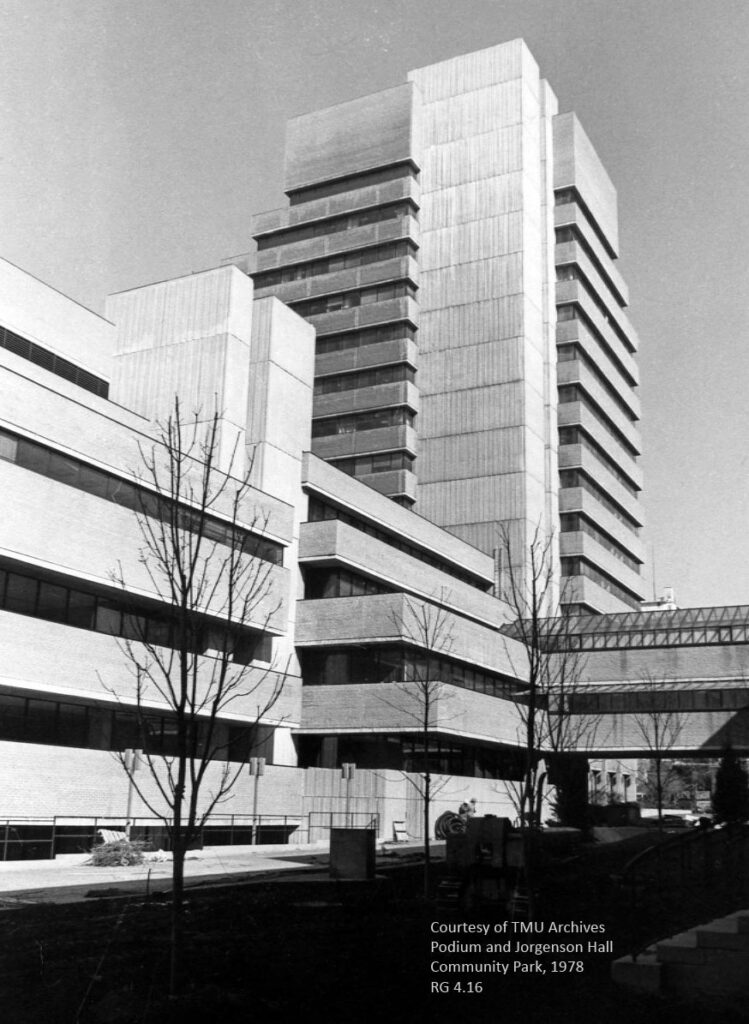
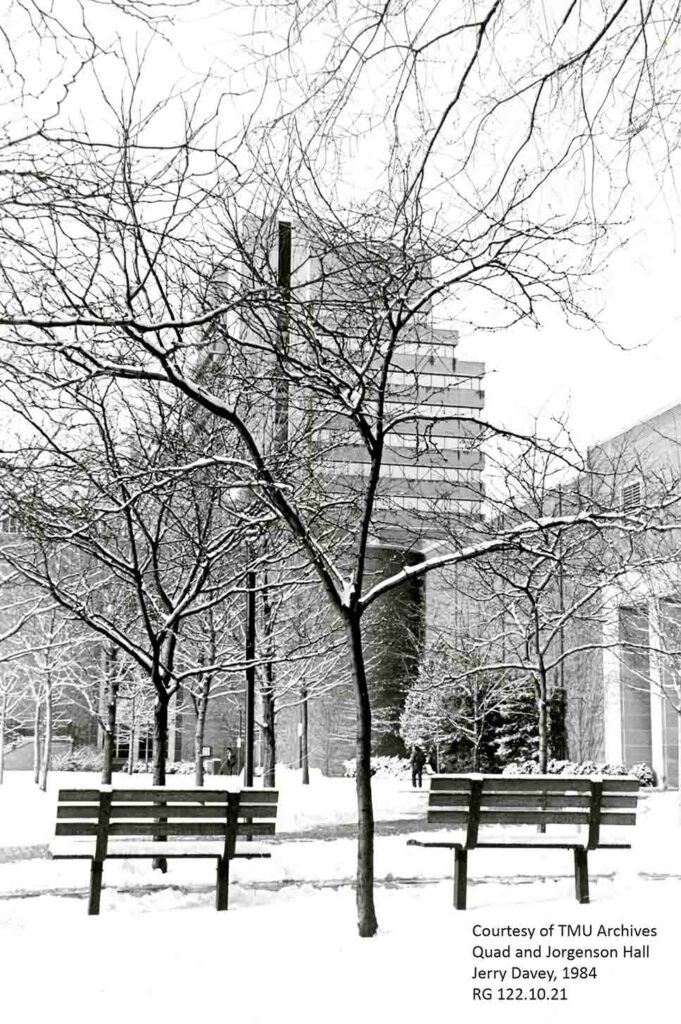
Why was Ryerson Polytechnic Institute an ideal host for the conference?
Ryerson Polytechnic Institute was an ideal place to host this event because of its convenient proximity to Toronto’s gay village and Allan Gardens. Originally, many lesbian and gay activists were opposed to the idea of designated gay spaces in Toronto, believing them to be a form of segregation (Chambers 70). However, as violence against the queer community worsened, designated queer spaces were deemed necessary for the organization of future events. This necessity, combined with the changing demographics of the location, resulted in the emergence of Toronto’s Gay Village, located off of Church and Wellesley street (Nash 1). In the 1960s, the area saw an influx of young adults which changed the demographic age range of the area, followed by an influx of gay men in the 1970s (Chambers 77). By the 1980s, Toronto’s gay village was well-established and viewed as a political space necessary to the queer movement (Nash 1). Jorgenson Hall and Oakham House, the buildings on campus where the conference was held, are located about a ten-minute walking distance to Toronto’s gay village.
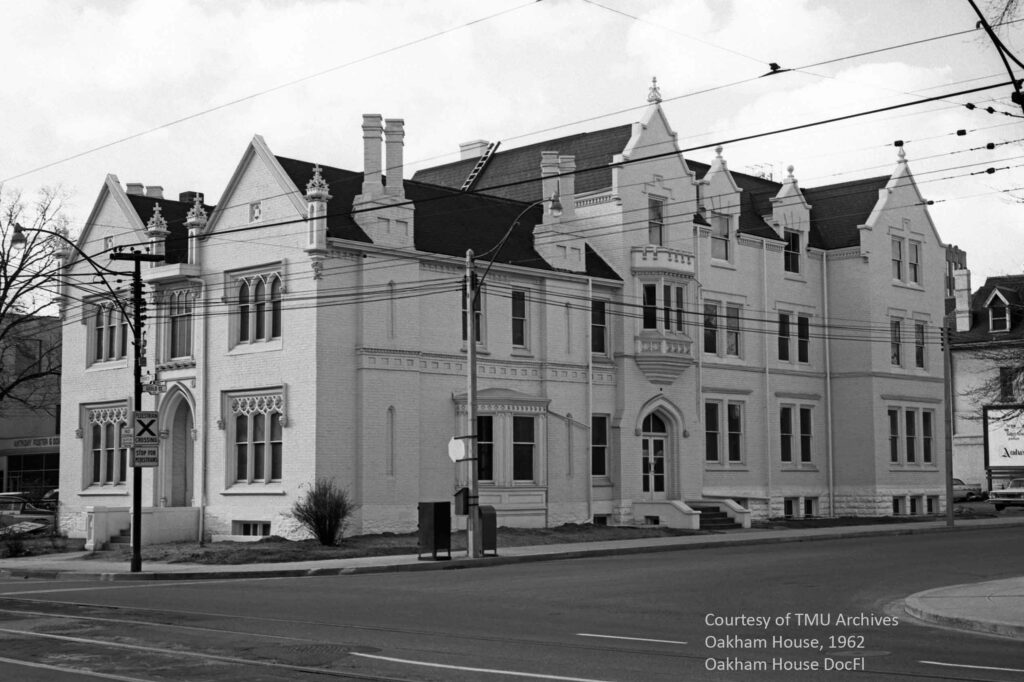
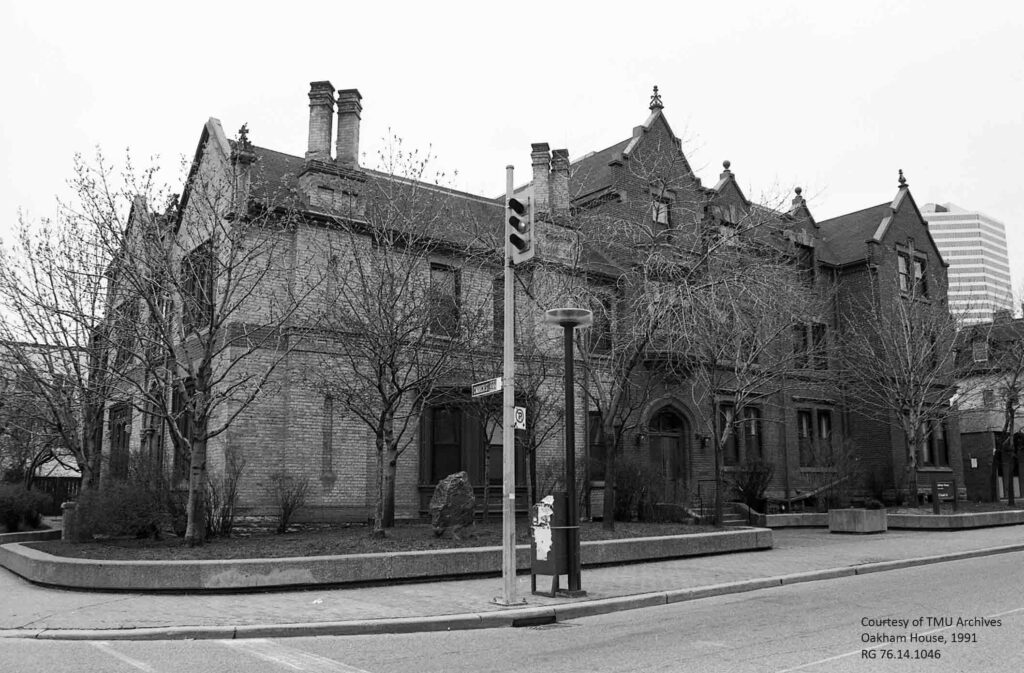
Ryerson’s campus is also only a few blocks away from Allan Gardens. On May 27, 1882, Wilde gave a lecture entitled “The House Beautiful” at Allan Gardens, which, at the time, was called the Pavilion of Horticultural Gardens (Chambers 63). Aside from the Gardens’ connection to Wilde, it had historical connections to the LGBTQ+ movement. From as early as the 1890s, the Gardens were known as a cruising area for gay men (Chambers 64). In 1974, a LGBTQ+ pride march was held starting at Allan Gardens (Chambers 66). The march was organized by the Gay Alliance Toward Equality and took place two years after Toronto’s first Pride. Because of Allan Gardens’ significance in queer history, a trip to the Gardens was included on the itinerary of the Wilde ‘82 conference, meaning that Jorgenson Hall’s close proximity to the Gardens made it an ideal location for the conference.
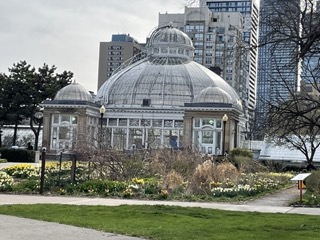
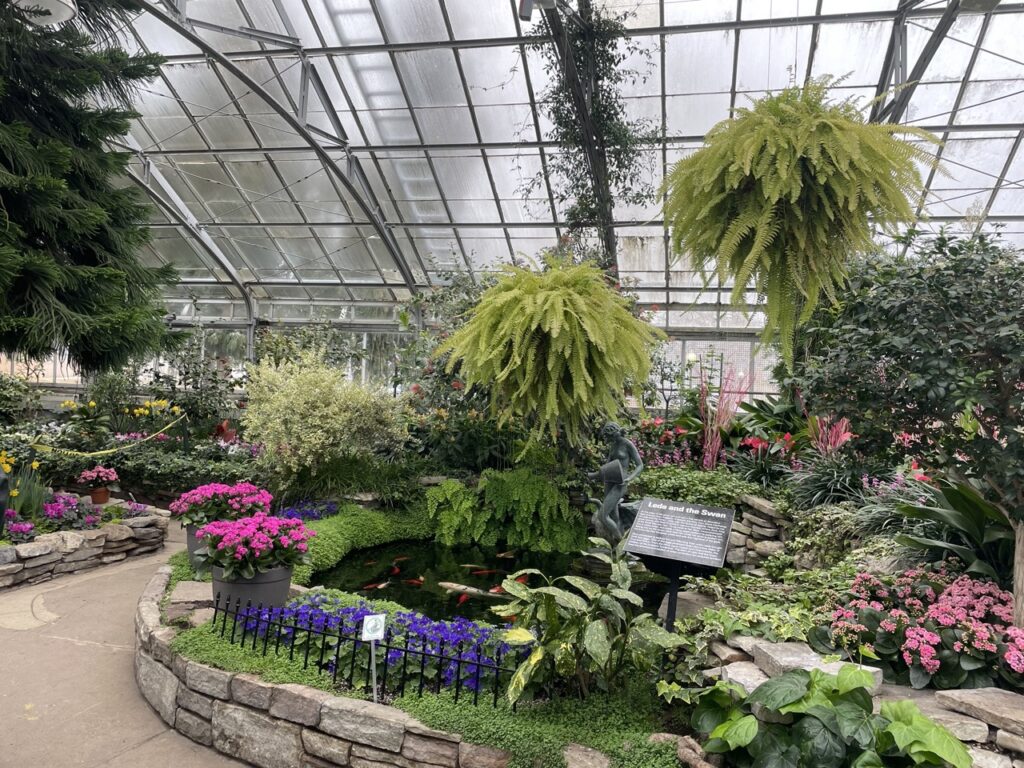
Ryerson was also located close to the Canadian Gay Archives, and Alan Miller, an organizer of the event, stated during an interview that Ryerson offered free rooms to gather which helped lower the cost of organizing the event. Miller further explained that the institution was also chosen for its acceptance of the queer community, seen through the institution’s equality group RyePride and its employment of queer individuals.
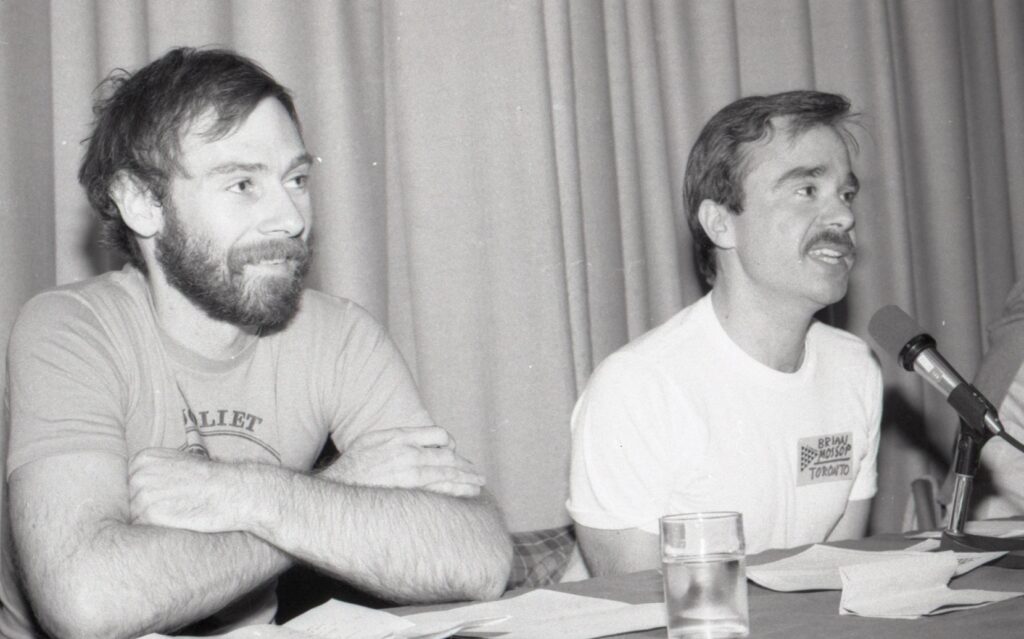
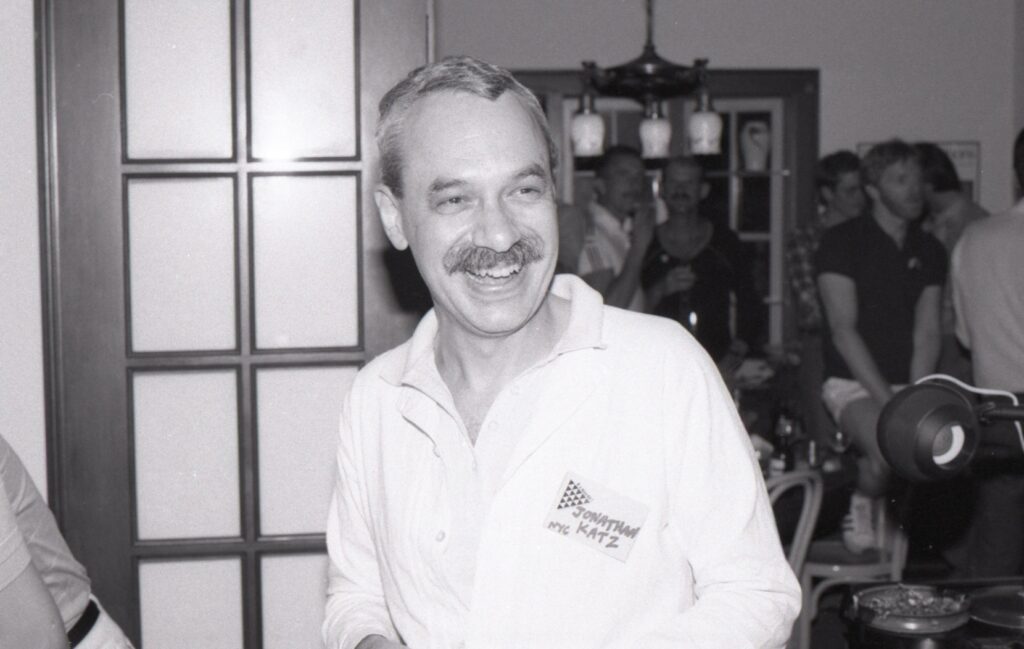
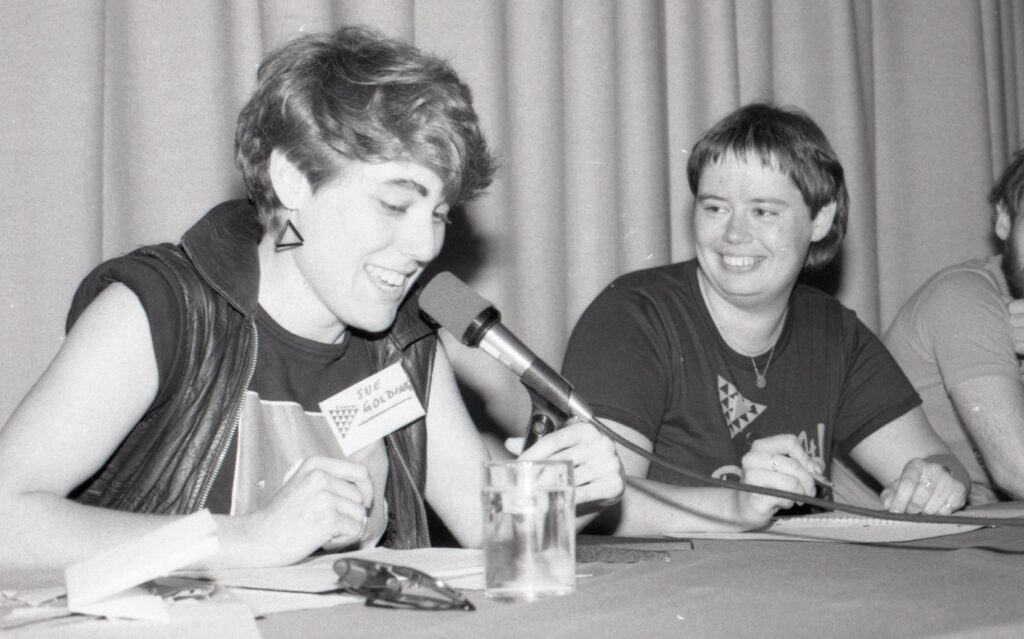
Campus-based organizing was also ideal for the gay and lesbian movement as it attracted a larger and more diverse range of participants. Universities attracted students and faculty from a wide variety of locations, not just urban communities (Jennex and Eswaran 154). Campus-based organization also attracted more participants as students were able to openly participate in queer-focused events when farther away from their hometowns and possibly prejudicial families.
How the conference was significant to Ryerson Polytechnic Institute
Using Ryerson Polytechnic Institute as a host for the conference established its image as an LGBTQ+ friendly institution. While Ryerson had some connections to the LGBTQ+ community before the conference, hosting Wilde ‘82 demonstrated their willingness and capability to host public, academic queer events.
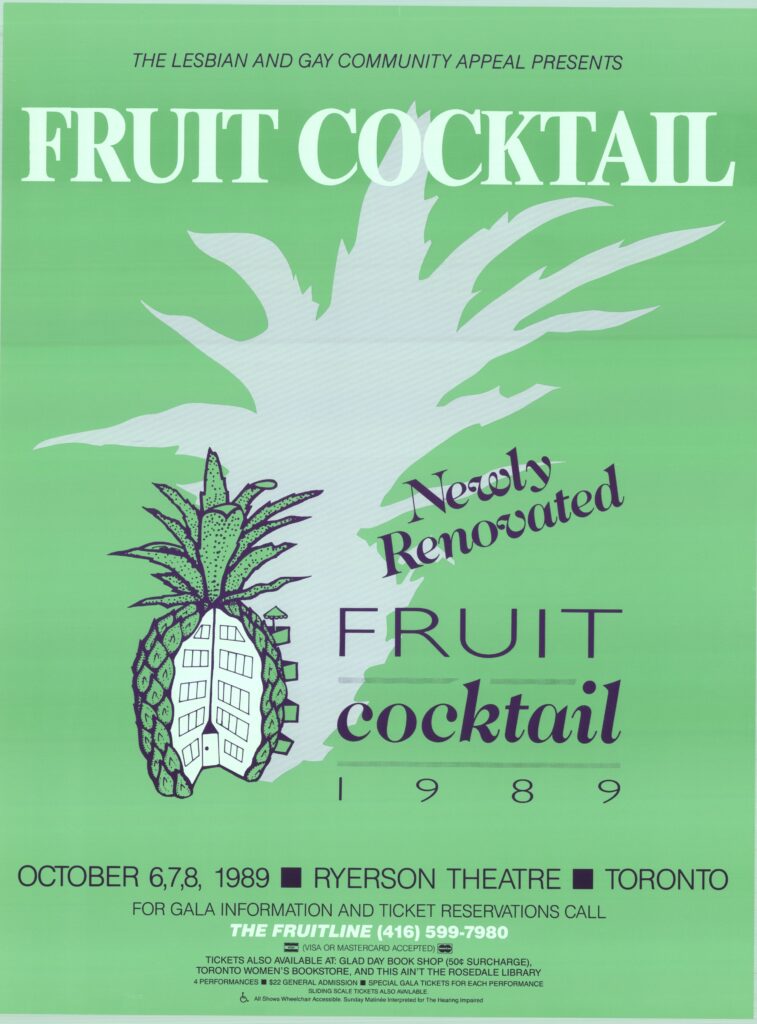
This helped solidify Ryerson as a public ally and an ideal host for future queer-focused events. In 1983, a year after the Wilde ‘82 conference, a queer variety show called Fruit Cocktail was hosted at Ryerson’s theatre to raise funds for the Lesbian and Gay Community Appeal, now Community One Foundation (Jennex and Eswarsan 198). Ryerson’s support continued into 1986 with the hosting of the drag extravaganza DQ.
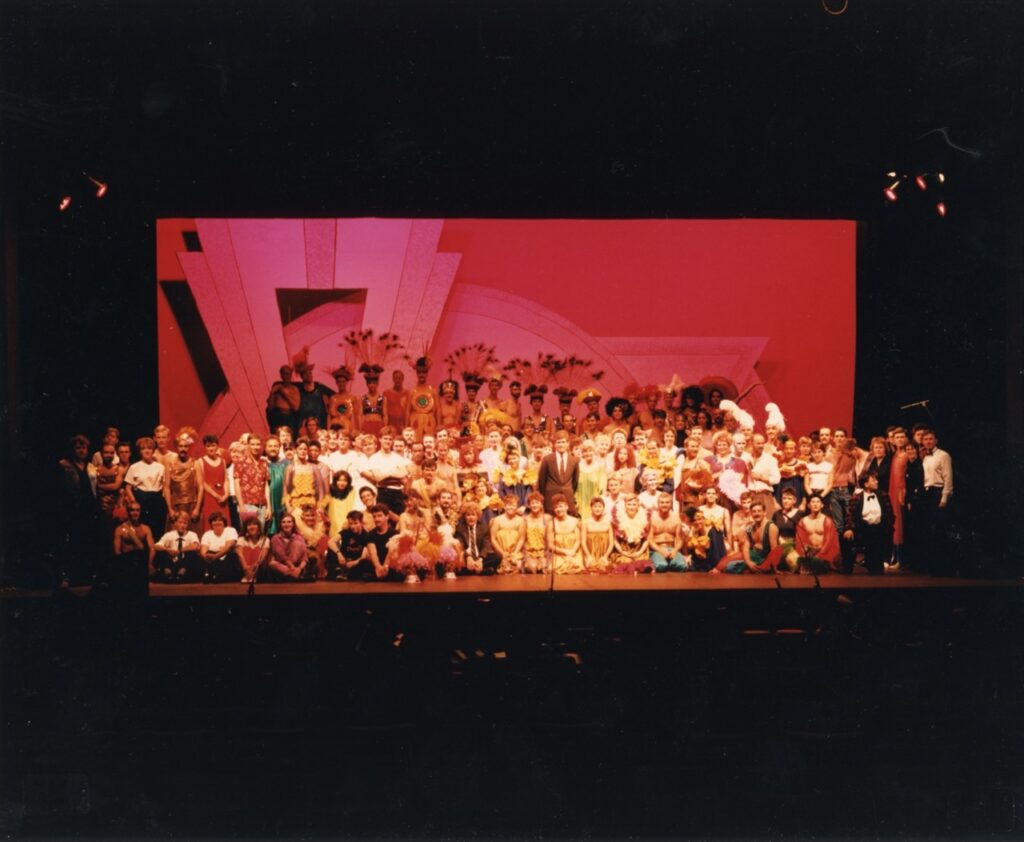
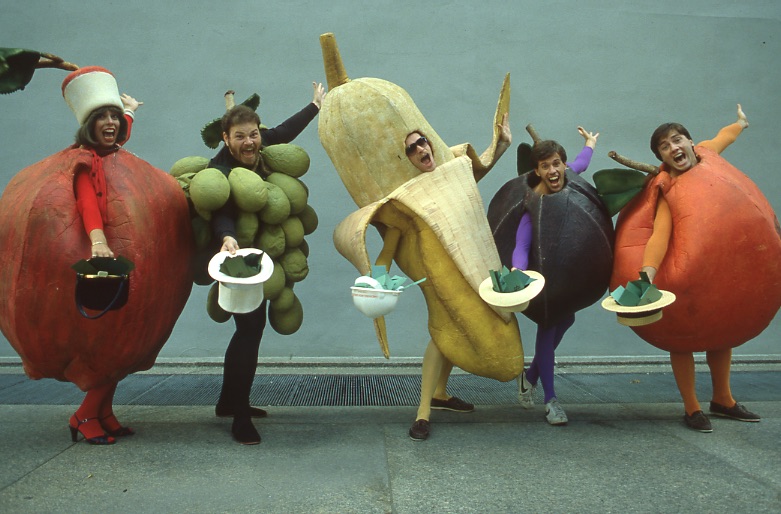
Sources
Chambers, Stephanie. Any Other Way: How Toronto Got Queer. Toronto: Coach House Books, 2017.
Doucet, Claude W. “A Brief History of Ryerson University (1948-2007).” Toronto Metropolitan University Archives & Special Collections, 2007, https://library.torontomu.ca/asc/archives/ryerson-history/brief-history/?_gl=1*kxn7la*_gcl_au*MTU3NzY1NjcwNS4xNjkwNTc2Njkx.
Jennex, Craig. “No More Shit! Complicated Collectivity, Past and Present.” GUTS Magazine, issue 3, 2015, https://gutsmagazine.ca/no-shit/.
Jennex, Craig and Nisha Eswaran. “1971-1981: Collective Formation.” Out North: An Archive of Queer Activism and Kinship in Canada. Vancouver: Figure 1 Publishing, 2020: 96-163.
McCaskell, Tim. Queer Progress: From Homophobia to Homonationalism. Between the Lines, 2016.
Nash, Catherine J. “Toronto’s Gay Village (1969-1982): Plotting the Politics of Gay Identity.” Canadian Geographer, vol. 50, no. 1, 2006, pp. 1-16. ProQuest, www.proquest.com/scholarly-journals/torontos-gay-village-1969-1982-plotting-politics/docview/228346026/se-2.
Jackson, Ed. “History: Doing it in the Archives.” The Body Politic, September 1982, vol. 86, September 1982, pp. 33- 34, http://archive.org/details/bodypolitic86toro.